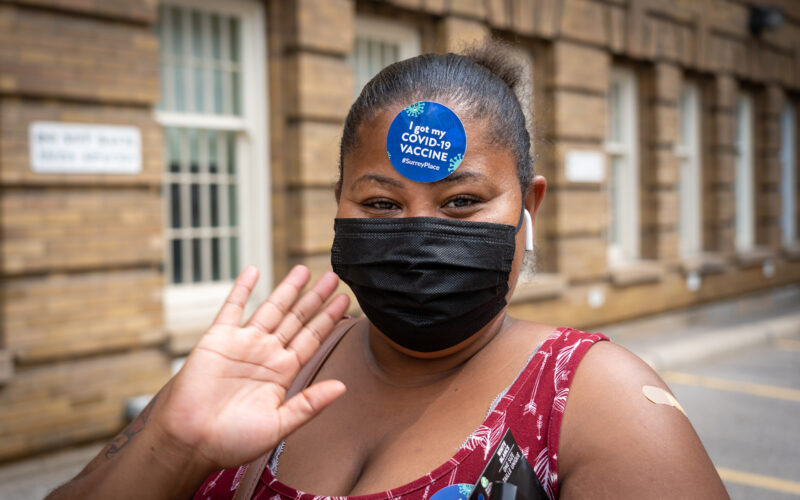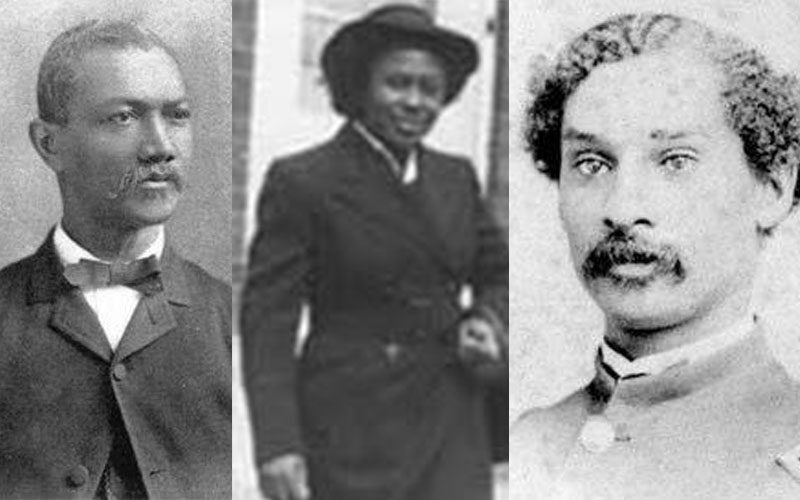We asked Grace, a Surrey Place client, and her mother, Anne Marie, what it was like for Grace to get her COVID-19 vaccine.
What was it like to get your COVID-19 vaccine? How did you feel before and after the vaccination?
Grace: “[Before my appointment, I was] scared and nervous.”
Anne Marie: I was really worried that Grace would not go through with it. Grace has a very deep-seated fear of needles. I had to do a lot of self-talk as I got into the car with Grace on the morning of the vaccine. I could feel my pulse racing, and I could feel my anxiety, stress and worry rising.
Grace’s behaviour is also very unpredictable, so as much as I try to anticipate what her reaction might be, I can never know for sure. She is quite impulsive, so I was even worried that she might try to bolt WHILE the needle was in her arm.
Grace: “[After my appointment, I was] happy!”
Anne Marie: I was SO relieved I had tears of joy in my eyes. Even now, as I write this, my eyes start to tear up. Such relief and such pride. I also felt extremely grateful for the support and help. My sister came with me, and the doctor was so patient. Surrey Place was there to check us in, check on us along the way, and of course, it was Surrey Place who reached out to me to set up the appointment. I was very, very grateful to so many for helping to make this happen. In my world, Grace getting a vaccine is indeed a monumental event! It takes a village.
How did Surrey Place help you learn more about the COVID-19 vaccine or help you feel more comfortable getting it?
Anne Marie: I do not think that Grace would have been able to get a vaccine without the support and help from Surrey Place! Firstly, Surrey Place worked with the clinic to help them be as prepared as possible to support adults with developmental disabilities. This step is critical, as the needs of this group are very unique.
Also, Surrey Place reached out to me to inquire about my interest in registering Grace for this vaccine. The conversation I had with Matt [Instructor Therapist in the TRE-ADD Program] was so helpful and supportive because he clearly understood my worries. Matt was also very encouraging when I shared some of what I had been doing to prepare Grace for the vaccine. I am a single mom, and sometimes I feel like I am just flying by the seat of my pants in trying to figure out how to support Grace, so I was very grateful to hear such positive words from Matt.
Surrey Place also helped because they produced a video of Amanda, a person with a developmental disability, getting her vaccine.
This video provided Grace with important insight on where we were going and what to expect. The first time she watched it, Grace said, “I like the gym.” Seeing that the clinic was in a space that Grace associates with a positive activity was a bonus! The video of Amanda also helped me know a bit more about the area, so I was better prepared for supporting Grace. For example, even knowing that we had to enter the building and then go upstairs was helpful to know ahead of time.
Do you have any advice for anyone currently eligible to get the COVID-19 vaccine?
Anne Marie: I have been desensitizing Grace for months and far more in the last few weeks as it became clear that she was soon going to be eligible. Every person is unique with their needs, fears, behaviours, etc., but I will share some of the aspects of the desensitizing process used with and for Grace:
- Normalize the vaccine as much as possible. Grace does not understand ‘vaccine,’ so we always refer to it as the needle. I tried to normalize it for Grace by showing her photos and videos of people she knows getting the needle.
- Use “First… then” framing. Grace understands that ‘COVID’ means she cannot have her best friend sleepover, she cannot go to camp, and she cannot hug her family members. For months, Grace has known that “Two needles, and then hugs,” or “Two needles and then a sleepover.” At the clinic, Grace knew that after the needle, she would video call one of her favourite cousins.
- Bring a family member along. My sister came with me to the vaccination clinic, and this was helpful for several reasons – for moral support for me, for a nice distraction for Grace, and having an extra set of hands.
- Make or use a photo book about the vaccination experience. This was one of the most critical tools that supported Grace’s vaccination process, both the desensitization part of it, and when we were at the clinic. I tried to capture each step of the process to help Grace understand the various steps ahead of time. She read it multiple times and became very familiar with all the steps. The book was also pivotal during the process, as it allowed us to celebrate all the incremental stages of getting the vaccine.
- Incorporate choice into the process wherever possible. This was also an intentional part of my plan. For example, Grace knew she could choose what arm to have the needle in and where we would go for lunch after the needle.
We all know that COVID-19 can be a life-or-death virus. Getting the vaccine is about my daughter’s health, her safety, and her life. I am forever grateful for Surrey Place acting and advocating on behalf of individuals who require extra care, time and attention to these critical health care needs. Surrey Place created access to the vaccine for Gracie… thank you, times a million!


